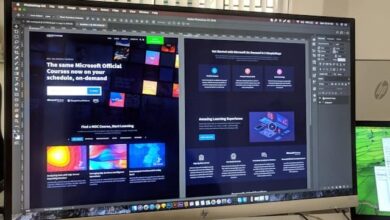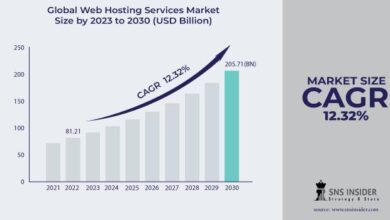What’s Next for ASP.NET Core and Blazor — Visual Studio Magazine

Q&A
What’s Next for ASP.NET Core and Blazor
Since its inception as an intriguing experiment in leveraging WebAssembly to enable dynamic web development with C#, Blazor has evolved into a mature, fully featured framework. Integral to the ASP.NET Core ecosystem, Blazor offers developers a unique combination of server-side rendering and rich client-side interactivity.
These days, developers can even use the Blazor Hybrid approach to leverage .NET MAUI for creating native apps with a mix of web and native technologies, allowing for a transition from older technologies like WPF and Windows Forms.
To help keep up with the fast-moving framework, none other than Daniel Roth, principal product manager for ASP.NET at Microsoft, will present a session at the upcoming Visual Studio Live! developer conference at Microsoft HQ in Redmond, Wash., titled “What’s Next for ASP.NET Core & Blazor.”
The focus of the intermediate/advanced-level session will be on explaining all the new features coming to ASP.NET Core and Blazor for web developers in .NET 9.
Attendees are promised to learn:
- About new features in .NET 9 for web developers
- How to get started with the latest .NET features
- How to contribute feedback and insights to the .NET 9 release
We caught up with Roth to learn more about his upcoming session.
VisualStudioMagazine: Could you provide an example of a real-world application that could benefit significantly from the latest updates to ASP.NET Core and Blazor?
Roth: ASP.NET Core is a general purpose web framework for building any kind of web app, but for .NET 9, we’re particularly focused on cloud native apps and intelligent apps that leverage the latest AI features. The .NET eShop sample app is a great example of an app that leverages these capabilities.

“ASP.NET Core is a general purpose web framework for building any kind of web app, but for .NET 9, we’re particularly focused on cloud native apps and intelligent apps that leverage the latest AI features.”
Daniel Roth, Principal Product Manager, ASP.NET, Microsoft
What are one or two standout features in the upcoming .NET 9 release for ASP.NET Core and Blazor that you believe will significantly enhance web development?
In .NET 9 we’re doing a lot of work to improve the load & startup performance of Blazor apps.
For example, we’re optimizing how the .NET runtime on WebAssembly initializes so that you start up faster and we’re making Blazor’s initialization logic more efficient by leveraging source generation for JSON serialization. We’re also optimizing how static web assets are handled for all ASP.NET Core apps so that your files are pre-compressed as part of publishing your app. For API developers we’re providing built-in support for OpenAPI document generation.
How does .NET 9 improve upon the current limitations or challenges faced by developers using ASP.NET Core and Blazor?
.NET 9 together with .NET Aspire is optimized for cloud native development. Part of that work is making sure ASP.NET Core works great in distributed environments. For example, we’re doing work on how ASP.NET Core handles data protection so that it’s easier to robustly and securely handle key material. We’re also revamping how distributed caching is handled in ASP.NET Core to make it easier to use, improve efficiency, and support more scenarios.
How will the new features in .NET 9 facilitate better integration with other technologies and platforms?
For Blazor in .NET 9 we’re working with the Microsoft Entra team to add tooling so you can easily configure authentication in your Blazor Web Apps. We’re also planning to introduce a new project template for setting up a Blazor solution that targets both the Web and native mobile and desktop platforms through .NET MAUI and Blazor Hybrid.
What steps should developers take to prepare their existing applications for migration to .NET 9?
Backwards compatibility is a top priority for each .NET release. You should be able to upgrade most apps to .NET 9 without making any additional code changes. Just retarget your app to .NET 9 to benefit from all the performance & quality improvements and then start leveraging the new features.
For the session, you mention encouraging feedback and insights for the .NET 9 release. What mechanisms are in place for developers to contribute their experiences and suggestions?
Contributions & feedback from the community are a big part of the success of the .NET platform. .NET is public and open source on GitHub, so feedback is best shared through GitHub issues and discussions.
What resources or support does Microsoft offer to help developers get up to speed with these new capabilities?
You can find out about everything that’s new for ASP.NET Core & Blazor in .NET 9 in the ASP.NET Core docs. You can also stay up to date with the latest .NET 9 updates by following the release announcements in the GitHub discussions of the ASP.NET Core repo.
How do you envision the future of web development with ASP.NET Core and Blazor evolving beyond .NET 9?
.NET has a long history of supporting web developers with great frameworks and tools, and we expect to continue to invest so that you can be as productive as possible building web apps that are fast, secure, and delightful to use.
Note: Those wishing to attend the conference can save hundreds of dollars by registering early, according to the event’s pricing page. “Register for VSLive! at Microsoft HQ by the Early Bird deadline of July 12 to save up to $300 and secure your seat for intensive developer training at Microsoft HQ in Redmond!” said the organizer of the developer conference, which is presented by the parent company of Visual Studio Magazine.



